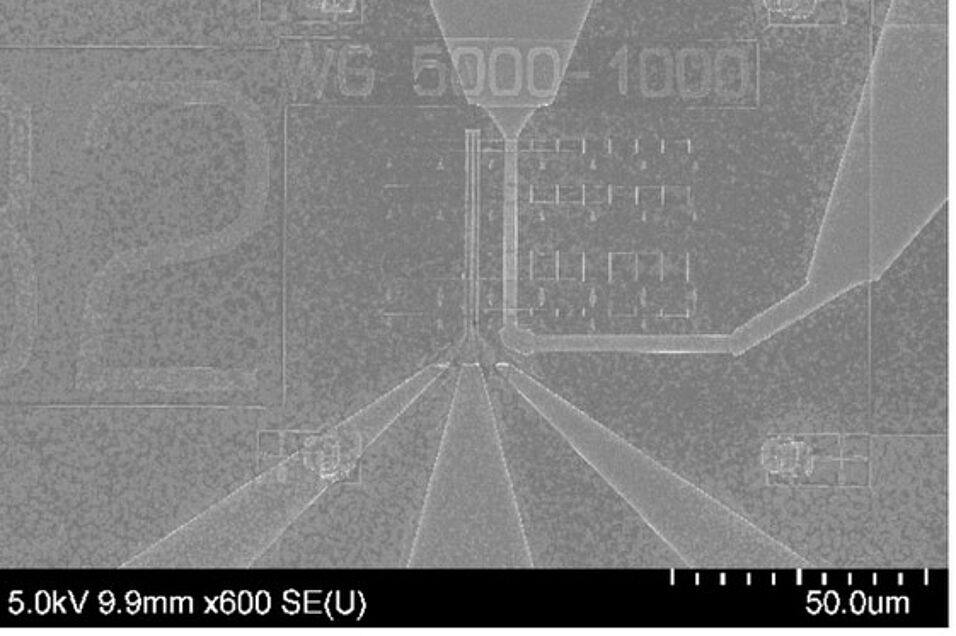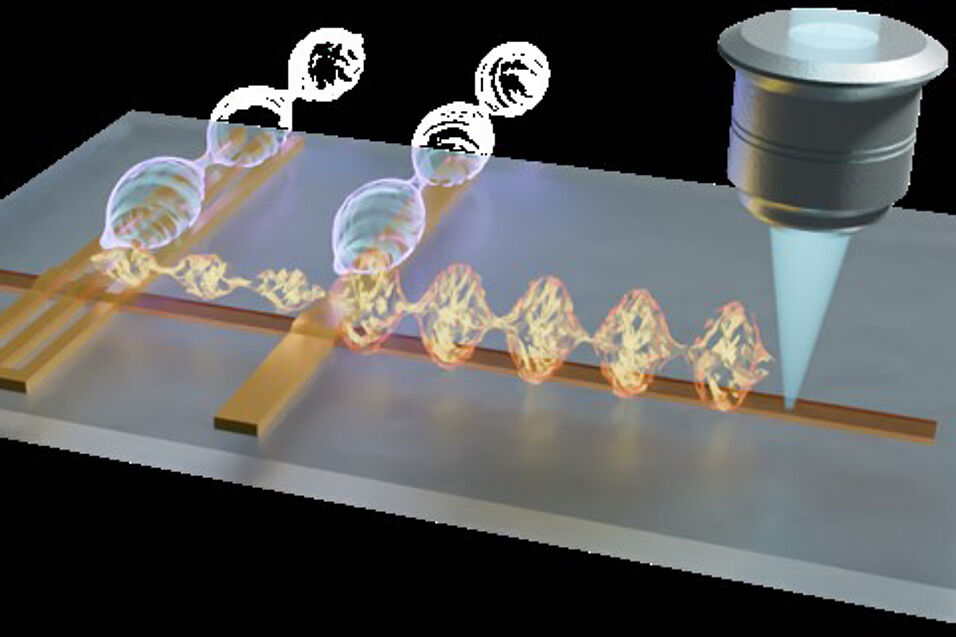So-called magnons can perform certain tasks faster or with much less energy compared to electronics. Experts are therefore working on enabling magnon-based computing in the future - in addition to the current electron-based computing. Scientists at the University of Vienna have now achieved an important breakthrough on the way to such a technology of the future. The results were recently published in the renowned journal Nature Communications.
A magnon is a tiny disturbance, or wave, that moves through solid magnetic material, much like how water waves ripple away from a stone thrown into a lake. Scientists around the world are working to make magnon-based computing possible, complementing the current electron-based computing we use in every device. "Such a development is very important given the ever-increasing amount of energy that humanity spends on computing every day," explains physicist Andrii Chumak from the University of Vienna, head of the recently published study.
While many prototypes of such computing elements and units have already been created, the large-scale integrated magnonic network, which consists of many elements, has not yet been realised. One of the conceptual roadblocks is that after the spin-wave signal is processed by different elements, it comes out of such a unit disturbed and with smaller amplitude. An international research team led by the University of Vienna has now developed a so-called "magnonic repeater" that solves precisely this problem. The Magnonic Repeater takes a signal of any shape and amplitude, "tidies" it up and amplifies it to the required pre-defined level. Such a signal can then go to any other device and a large integrated magnonic circuit can be realised by the so-called cascading.
"We have managed to remove one of the biggest obstacles on the way to more energy-efficient computing. We have come one step closer to realising large-scale magnetic circuits that can perform complex tasks with very low energy consumption. Our results have exceeded our expectations and open up very good prospects for magnon-based data processing, also for the field of magnonics in general," summarises Chumak.
The newly developed device is based on a new physical phenomenon that was recently discovered by the NanoMag group at the University of Vienna and published in Science Advances - the so-called "deep nonlinearity". In this phenomenon, the spin wave carrying the information can change the properties of the medium on its own. As a result, the researchers have gained access to the physical phenomenon of bi-stability, which is well known and used in physics and technology. In this phenomenon, the system can occupy two different states for the same spin-wave amplitude, depending entirely on the previous history. Moreover, a small and disturbed signal, assumed to come from the previous processing unit, can switch the system from one "ground" state to another "excited" state. And the output signal generated by the excited state is always the same and completely independent of the shape or amplitude of the pulse that triggered it. A perfect magnon repeater has thus been realized from magnetic nanostructures fabricated out of Yttrium Iron Garnet and experimentally tested using Brillouin light scattering spectroscopy.
Original publication:
Wang, Q., Verba, R., Davídková, K. et al. All-magnonic repeater based on bistability. Nat Commun 15, 7577 (2024). https://doi.org/10.1038/s41467-024-52084-0


